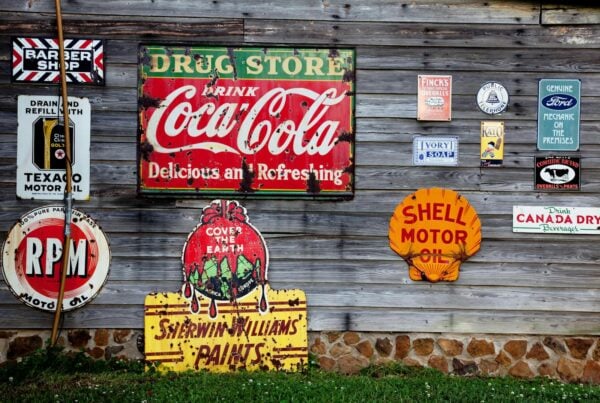From the cobalt glow of a medieval window to Yves Klein’s patented ultramarine, the story of French art is inseparable from the colour blue. Across a thousand years artists have used it to invoke the sacred, bottle seaside light, grieve a friend or distil pure sensation. Revisiting those eras reminds us that every generation rediscovers blue for its own needs, yet somehow keeps the emotion intact.
Table of Contents
Chartres: a Gothic dawn in glass
Long before easel painting stole the spotlight, pilgrims entering Chartres Cathedral were already bathed in a supernatural azure christened Chartres blue. The 12th-century glaziers fused cobalt, copper and antimony into panes so saturated that later craftsmen struggled to recreate them, even as the recipe became legend. Set high above the nave, the “Blue Virgin” window still reads like a suspended jewel, proving how colour alone could conjure the divine eight centuries before abstraction.
Dufy and the Riviera breeze
Fast-forward to the 1920s and the French Mediterranean is throbbing with jazz bands and speedboats. Raoul Dufy paints it all in ribbons of ultramarine, chasing the flicker of sun on water with a Fauvist’s fearlessness. His linen-rich blues are neither analytical nor sombre; they fizz like a cold glass of pastis at noon. Critics once dismissed Dufy as decorative, but a century on his canvases feel prophetic, anticipating Instagram’s obsession with coastal escapism.
Matisse: cutting colour free
Henri Matisse spent his final decade wielding scissors instead of brushes, slicing painted papers into monumental dancers and nymphs. Among them, Blue Nude II proves that a single contour can hold an ocean of feeling. What gives the figure its pulse is the precise balance between flatness and light: the woman drifts against a light blue background yet never dissolves, anchored by the hand-torn edge of each limb. Matisse called these cut-outs “painting with pure colour”, and their graphic punch continues to influence fashion posters and album covers today.
Picasso’s Parisian blues
Strictly speaking, Pablo Picasso was Spanish, but his 1901–04 Blue Period unfolded almost entirely in Montmartre boarding houses. Grief over a friend’s suicide plunged him into monochrome canvases of beggars and harlequins, proving that blue could also voice despair. Paris galleries were slow to buy them, yet the series seeded modernism’s conviction that hue could override realism.
Klein and the patent for the infinite
No French artist owned blue more completely than Yves Klein. In 1960 he trademarked International Klein Blue (IKB), a matte ultramarine so intense that it seemed to swallow light. Klein’s Anthropometries—nude models pressed like living stamps onto canvas—turned pigment into performance, while his Blue Monochromes argued that colour alone could be both subject and object. Half a century later IKB coats everything from couture gowns to space-age bicycles, proving Klein’s hunch that pure blue “carries within itself the quality of immateriality”.
Nicolas de Staël’s abstract horizons
In the austere post-war years Nicolas de Staël traded figurative motifs for slabs of thick oil applied with a palette knife. His late seascapes—Le Fort Carré chief among them—stack indigo and midnight bands until the image hovers between landscape and meditation. De Staël’s blues are never decorative; they’re weather fronts, heavy with moods that words can’t pin down.
Chagall’s floating dreams
Marc Chagall, naturalised in France in 1937, spun folklore and personal myth into ceilings and stained glass that glow with lapis lazuli. In his Paris Opera House mural, violinists, lovers and acrobats swirl through midnight skies, turning the dome into a celestial carousel. Chagall believed blue was the colour of love—the tone that binds earthly and spiritual realms. Perhaps that is why his scenes, however surreal, feel instantly intimate.
Soulages and the edge of black
Pierre Soulages earned fame for outrenoir—paintings so dark they trap light—yet throughout the 1960s his broad brushstrokes often carried a cargo of Prussian blue. In works like Peinture 9 juillet 1961, blue slips beneath ebony layers, flaring in the grooves like sparks on wet tarmac. Soulages shows that even when nearly eclipsed, the hue can inject breath into a seemingly monochrome field.
Why blue keeps coming back
From Gothic piety to mid-century minimalism, blue persists because it is both material and metaphor. Chemically it began as pulverised lapis from Afghan mines, later as synthetic ultramarine and modern acrylic. Emotionally it ranges from Dufy’s Riviera laughter to Picasso’s mourning silence. Each new generation of French artists tweaks the recipe—adding brilliance, mattness, fluorescence—yet somehow arrives at the same unresolved mystery: how can one wavelength feel like both depth and flight?
Science tells us that blue sits at the higher-frequency end of visible light, scattering through atmosphere and water alike; poets reply that it mirrors the human appetite for the unreachable. The stained-glass masters of Chartres sought heaven, Matisse sought joy, Klein sought immaterial space. Their solutions differ, but the question is identical and evergreen.
Contemporary painters such as Claire Tabouret or Julien Grenier continue the quest, dipping into cerulean pools that owe as much to smartphone screens as to lapis lazuli. Digital hues are limitless, yet many still grind dry pigment by hand, pursuing the old alchemy of binder, dust and longing. Walk into any Paris studio district today and you’ll spot canvases leaning against courtyard walls, raw ultramarine still drying, proof that the chase goes on.
Blue is old, blue is new, wrote the poet René Char after watching Klein’s assistants roll pigment onto a gallery wall; it invents itself each dawn. From Chartres to Klein the shade has hosted visions of sorrow, revelry, faith and abstraction, but its final meaning remains open—waiting, perhaps, for the next artist to stir another pot of cobalt and dream aloud.
Disclosure Sponsored Links: This post contains a paid-for sponsored link, meaning we have received compensation in exchange for including it. Sponsorship does not influence our content, but we believe in transparency regarding paid placements.








